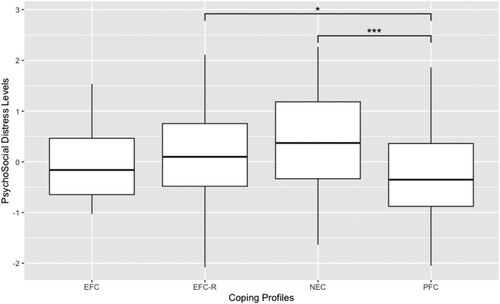Figures & data
Table 1. Demographic characteristics of participants.
Table 2. Coping strategy use, mean coping scores and mean psychosocial distress levels.
Table 3. Demographic characteristics of coping profiles and p-values from demographic profile comparison analyses
Figure 2. Mean psychosocial distress levels compared between the four coping profiles.
Note: NEC = No effective/no coping, PFC = Problem-focused coping, EFC = Emotion-focused coping, EFC-R = Emotion-focused religion-dominant coping. * p < .05, ** p < .01 and *** p < .001.

Table 4. Post-hoc comparisons of psychosocial distress levels between coping profiles.

